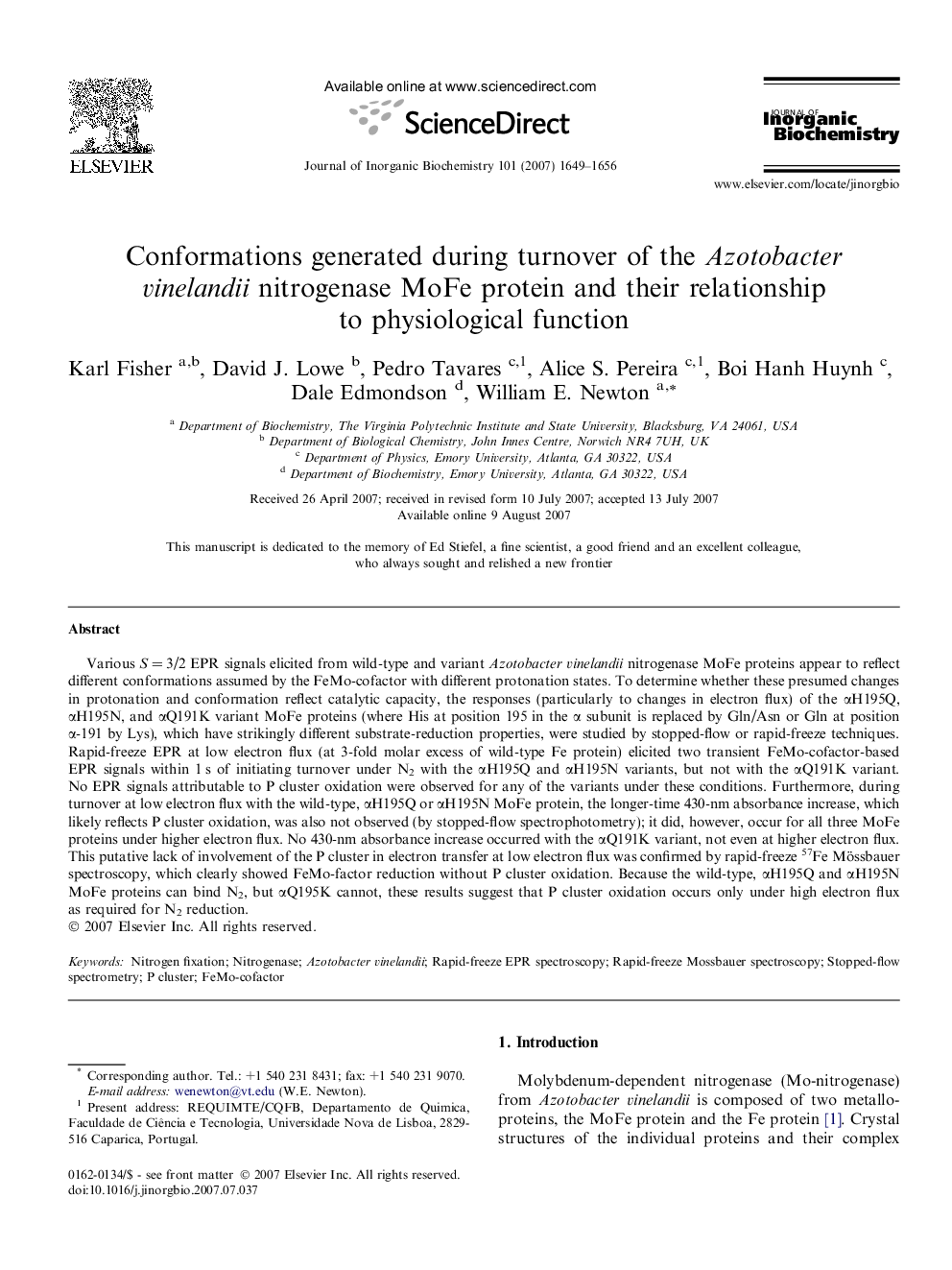| کد مقاله | کد نشریه | سال انتشار | مقاله انگلیسی | نسخه تمام متن |
|---|---|---|---|---|
| 1317069 | 1499481 | 2007 | 8 صفحه PDF | دانلود رایگان |

Various S = 3/2 EPR signals elicited from wild-type and variant Azotobacter vinelandii nitrogenase MoFe proteins appear to reflect different conformations assumed by the FeMo-cofactor with different protonation states. To determine whether these presumed changes in protonation and conformation reflect catalytic capacity, the responses (particularly to changes in electron flux) of the αH195Q, αH195N, and αQ191K variant MoFe proteins (where His at position 195 in the α subunit is replaced by Gln/Asn or Gln at position α-191 by Lys), which have strikingly different substrate-reduction properties, were studied by stopped-flow or rapid-freeze techniques. Rapid-freeze EPR at low electron flux (at 3-fold molar excess of wild-type Fe protein) elicited two transient FeMo-cofactor-based EPR signals within 1 s of initiating turnover under N2 with the αH195Q and αH195N variants, but not with the αQ191K variant. No EPR signals attributable to P cluster oxidation were observed for any of the variants under these conditions. Furthermore, during turnover at low electron flux with the wild-type, αH195Q or αH195N MoFe protein, the longer-time 430-nm absorbance increase, which likely reflects P cluster oxidation, was also not observed (by stopped-flow spectrophotometry); it did, however, occur for all three MoFe proteins under higher electron flux. No 430-nm absorbance increase occurred with the αQ191K variant, not even at higher electron flux. This putative lack of involvement of the P cluster in electron transfer at low electron flux was confirmed by rapid-freeze 57Fe Mössbauer spectroscopy, which clearly showed FeMo-factor reduction without P cluster oxidation. Because the wild-type, αH195Q and αH195N MoFe proteins can bind N2, but αQ195K cannot, these results suggest that P cluster oxidation occurs only under high electron flux as required for N2 reduction.
Journal: Journal of Inorganic Biochemistry - Volume 101, Issues 11–12, November 2007, Pages 1649–1656